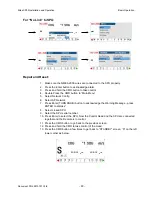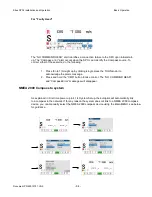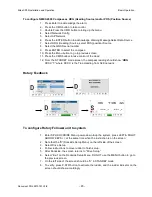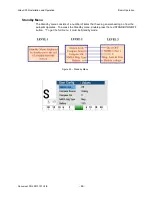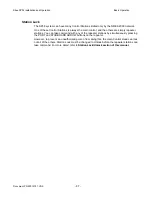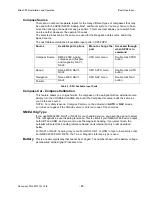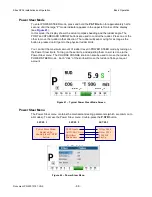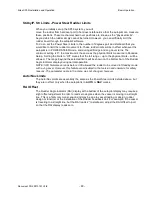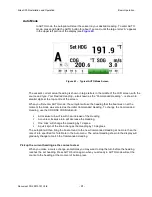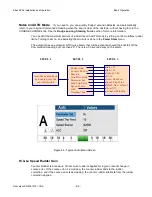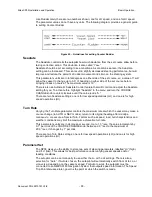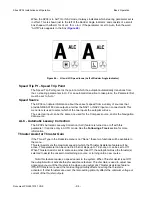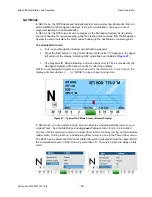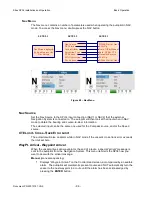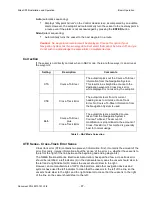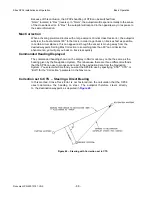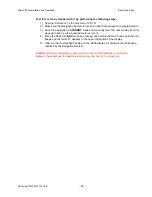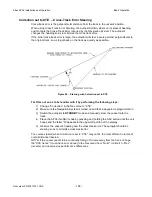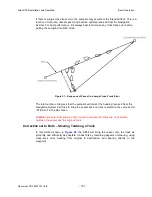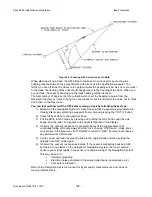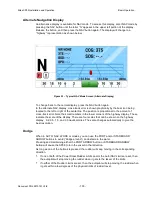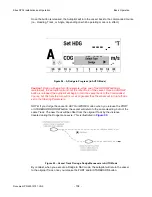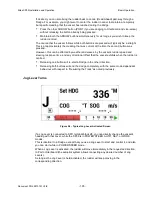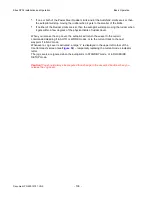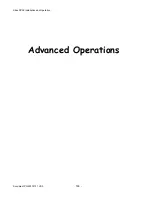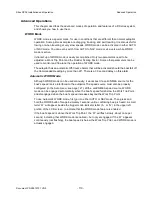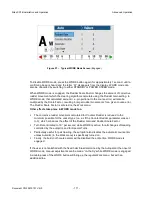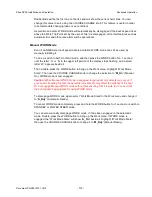
Sitex SP38 Installation and Operation
Basic Operation
Document PN
29010101
V2r0
- 9
7
-
Auto
(automatic sequencing):
•
Displays “Waypoint Arrival” on the Control Head screen, accompanied by an audible
alarm. However, the autopilot will automatically turn the vessel to the next waypoint in
a route even if the alarm is not acknowledged by pressing the
ENTER
button.
Silent
(silent sequencing):
•
Automatically turns the vessel to the next waypoint in a route.
Caution!
No waypoint arrival alarm will be displayed.
Choose this option if your
Navigation System has its own waypoint arrival alarm that cannot be turned off, and you
do not wish to acknowledge the same alarm on multiple devices.
Correction
If the vessel is not directly on track when in
NAV
mode, there are three ways it can arrive at
the waypoint:
Setting
Description
Comments
CTS
Course-To-Steer
The autopilot picks out the Course-To-Steer
information from the Navigation System.
This results in a straight-line course to the
destination waypoint. Cross-track error,
while displayed, is not used by the autopilot.
XTE
Cross-Track Error
The autopilot steers from its current
heading so as to minimize Cross-Track
Error. No Course-To-Steer information from
the Navigation System is used.
Both
Course-To-Steer
plus
Cross-Track Error
The autopilot steers a modified course
taken from the Navigation System’s
Course-To-Steer. The amount of
modification is proportional to the amount of
Cross-Track Error. This method is generally
best for normal usage.
Table 5 – NAV Mode Correction
XTE Sense - Cross-Track Error Sense
Cross track error (XTE) contains two pieces of information. First, it contains the
amount
of the
error. Secondly, it gives information about the ‘sense’ of the error (i.e. whether the vessel is to
the left or the right of the line between the beginning and ending waypoints).
The NMEA (National Marine Electronics Association) has specified how a cross track error
should be identified; a left indicator (L) in the data sentence means the vessel should steer to
the left and a right indicator (R) means the vessel should steer to the right.
However, some manufacturers of GPS, chart-plotters, and other navigation devices and
systems have used the left indicator to mean that the vessel is to the left of the line, so the
vessel should steer to the right, and the right indicator to mean that the vessel is to the right
of the line, so the vessel should steer to the left,
Summary of Contents for SP38 Autopilot
Page 2: ......
Page 14: ...Sitex SP38 Installation and Operation Document PN 29010101 V2r0 13 ...
Page 15: ...Sitex SP38 Installation and Operation Document PN 29010101 V2r0 14 Introduction ...
Page 16: ...Sitex SP38 Installation and Operation Document PN 29010101 V2r0 15 ...
Page 26: ...Sitex SP38 Installation and Operation Document PN 29010101 V2r0 25 ...
Page 35: ...Sitex SP38 Installation and Operation Document PN 29010101 V2r0 34 Installation ...
Page 36: ...Sitex SP38 Installation and Operation Document PN 29010101 V2r0 35 ...
Page 74: ...Sitex SP38 Installation and Operation Document PN 29010101 V2r0 73 ...
Page 108: ...Sitex SP38 Installation and Operation Document PN 29010101 V2r0 107 ...
Page 109: ...Sitex SP38 Installation and Operation Document PN 29010101 V2r0 108 Advanced Operations ...
Page 110: ...Sitex SP38 Installation and Operation Document PN 29010101 V2r0 109 ...
Page 123: ...Sitex SP38 Installation and Operation Document PN 29010101 V2r0 122 Care and Maintenance ...
Page 124: ...Sitex SP38 Installation and Operation Document PN 29010101 V2r0 123 ...
Page 127: ...Sitex SP38 Installation and Operation Document PN 29010101 V2r0 126 Appendices ...
Page 128: ...Sitex SP38 Installation and Operation Document PN 29010101 V2r0 127 ...
Page 156: ...Sitex SP38 Installation and Operation Document PN 29010101 V2r0 155 Warranty ...
Page 157: ...Sitex SP38 Installation and Operation Document PN 29010101 V2r0 156 User Notes and Settings ...
Page 158: ...Sitex SP38 Installation and Operation Document PN 29010101 V2r0 157 ...

